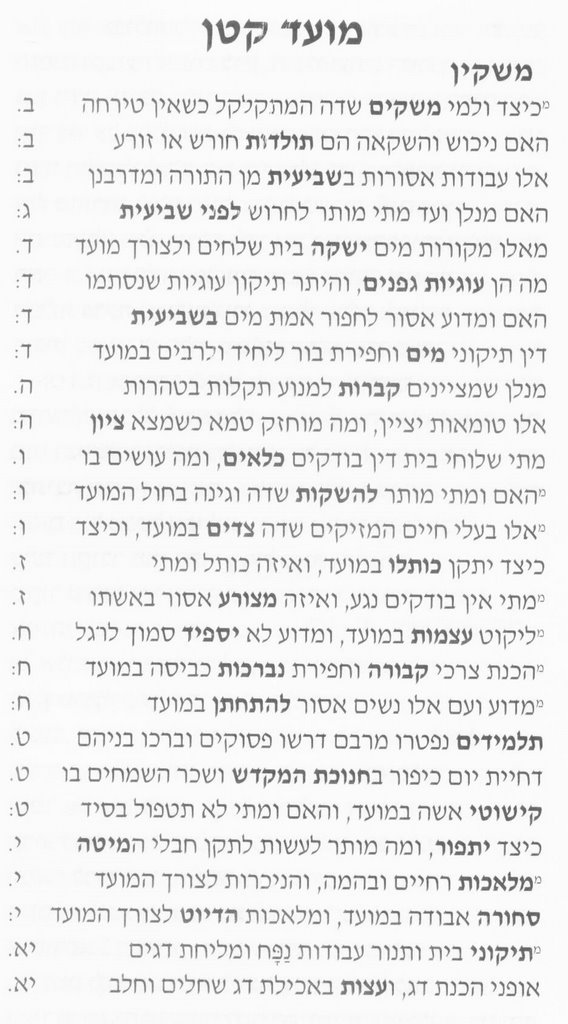continued from here.
Another foundational skill that needs to be acquired in learning is the ability to recall that which was learned – otherwise known as chazara. I often heard how important chazara is but what really hit it home for me was when I read a letter that Maran HaRav Kook Ztvk”l wrote to his brother in which he expressed horror about the fact that he heard that his brother only review each chapter of gemara three times before advancing to the next chapter. Rav Kook rebuked his brother and explained to him that in his experience, it is impossible to have any success in learning without reviewing each chapter at least ten times (!) before advancing to the next one.
Well, to put it mildly, I don’t exactly review each chapter I learn ten times. Frankly, I don’t even review it three times. I just don’t have the time to review so much with the 3 or so hours I can learn every evening. What I have employed a system of chazara that takes up little time and if very effective. Anonymous also emailed me his own personal system of chazara which I will also add to this post.
My system is not really my own. It really belongs to a certain talmid chacham who used to learn at the local beit midrash. He introduced me to a wonderful book called “מפתח סוגיות ועניני הש"ס” which was written by a talmid chacham in Eretz Yisrael by the name of Elhanan Kohn. (If your local sefarim store does not carry it, you can order it from the author at 03-6773393). This book is basically an topical index of the entire shas bavli. The most valuble part, however is not the index itself but rather the section in the back of the book title “מפתח לסדר הש"ס – לשינון ולזכרון הלימוד”. What this section does is list the sugyas of each massechet in the order they appear in the gemara in as manner as follows:
A dayly review of the sugyas you have learned in the past month or two is more valuable than you can imagine. It keeps the sugyas fresh in your mind and at the same time allows you to remember which page the sugya is located on. It is a quick way to attain a fairly high level of knowledge of the structure of the tractate you are studying. Of course, this type of chazara does not five you a great grasp of the shakla veTarya of the sugya but it is good within its own scope and is very valuable to baal-batim. I recommend to make a copy of the chapter you are studying and keep it in the gemara so that you can quickly review it before and after you start your seder.
Anonymous emailed me his own method of chazara:
The following is a suggestion for retaining a bit of the Torah that one learns. More accurately, it is the outline of a system that can be modified to one’s own taste. First and foremost, so many rabbanim stress the value of writing things down. They say that making summaries of mishnayos or gemara is an extremely important practice. However what type of summaries are they referring to? How long and how inclusive should they be? These types of questions must be answered, and IY”H, will be addressed in due course.
The first action that should be taken once having finished an amud, for example, is to break down the amud into its various meimras and sugyas. The breakdown ideally should not be the shakla v’tarya of the amud, but rather a four/five line (max.) summary of each sugya. So, if there are four sugyas or subjects on the amud, then what one should write down are four brief summaries. Preceding each summary should be an underlined phrase that sums up the entire summary. So if the topic, for instance, is yehareg v’al ya’vor (Sanhedrin 74a), then the summary title would be exactly that: yehareg v’al ya’vor, or any other phrase along those lines. The summary would then be something like the following:
Three mitzvos are yehareg v’al ya’vor: Shfichus Damim, Gilui Arayos, and Avodah Zarah. Machlokes by A”Z, but chachamim say from “b’chol nafshecha” that A”Z is one of the big three. The makor of S”D is a sevara of mi yeimar d’dama etc. which is then applied to G”A by the hekesh between S”D and A”Z.
Now, another beneficial step that can be taken is keeping a notebook where each side of a page represents a blat or an amud. This might be bit tough at first to fit all the necessary information in one page, but the advantage is that once the daf number is known (more on that in a moment), then the summaries can be quickly accessed.
A special effort should not be made to remember daf numbers, but rather where the major sugyos are located. This step will actually lead to one knowing the number of each daf, since the major inyanim will then act as mental notes, indicating one’s place in the perek.
Once one has the aforementioned two or three word (or more if necessary) summaries memorized or at least knows them very well, he can think about them wherever he goes. After a bit of repetition, the outline of a blat can be reviewed in under a minute. If one is in a place that affords him a bit of quiet, he can go over the full summaries, once he feels comfortable with them.
There is much more to say about the topic, but hopefully this introduction will encourage others to find a chazarah method in gemara that works for them. IY”H, a sample outline of a blat will be provided in the near future.
If you have your own methods, please let us know in the comments section. May everyone who reads this blog go from strength to strength and make a real kinyan on the Torah which they learn (beAhava!).
